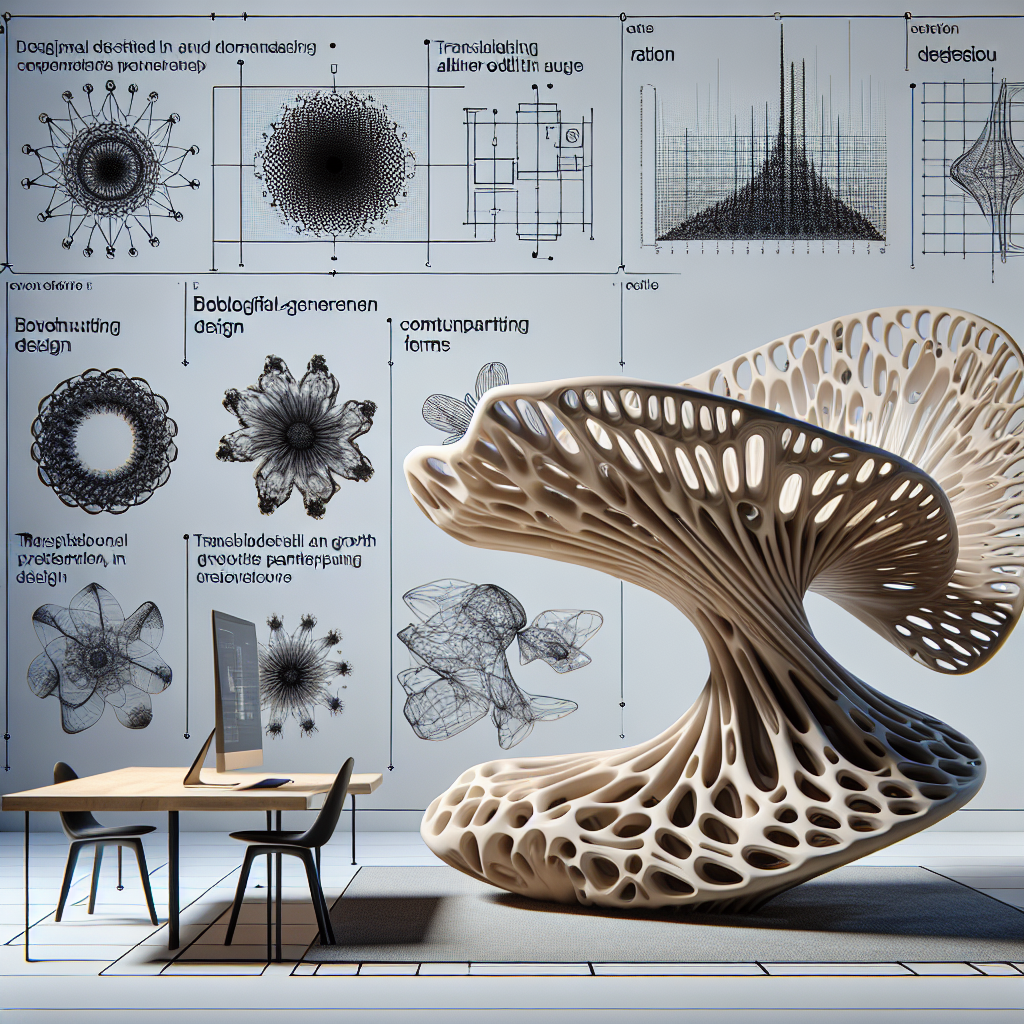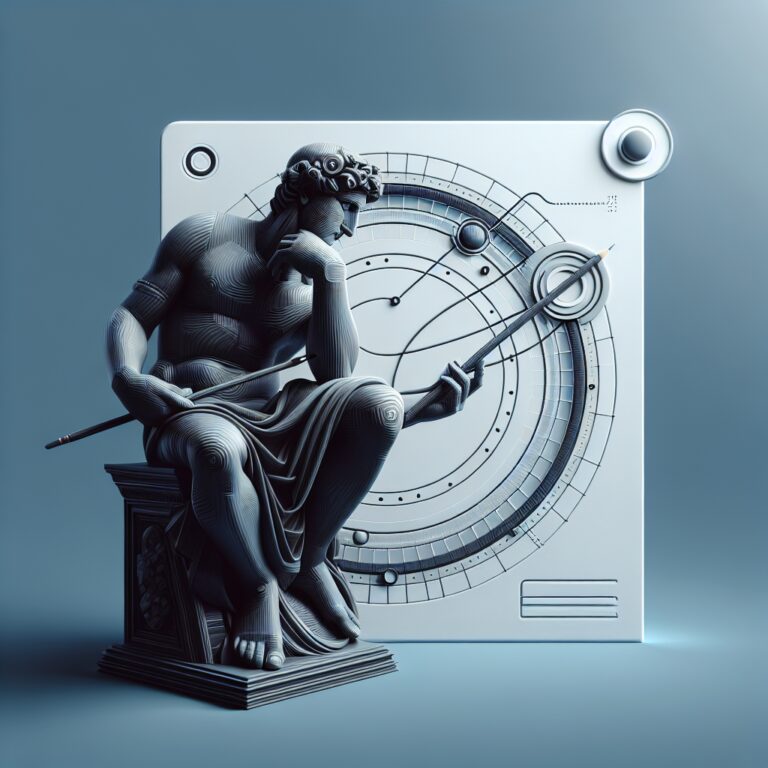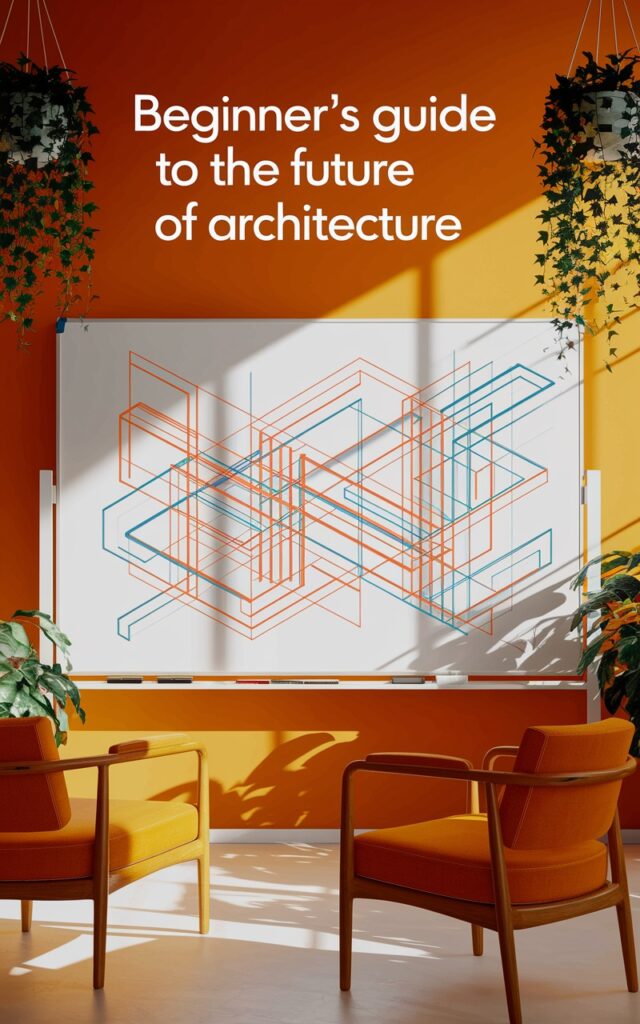Standing before an intricate sculpture of seemingly impossible geometry, your mind wrestles with a fundamental question—could human hands have created this complexity, or are you witnessing the output of an algorithm? The boundaries between human creativity and computational design have never been more fascinatingly blurred. As parametric design tools transform architectural and sculptural possibilities, we find ourselves in a new artistic frontier where mathematics and artistic expression intertwine. The organic-looking yet mathematically precise forms emerging from this intersection challenge our traditional understanding of authorship and creativity, inviting us to reconsider what it means to “design” in an age where computers can generate thousands of iterations from a single set of parameters.I stand transfixed before the undulating metal form, its surfaces flowing like liquid frozen in time. Is this the vision of a human artist, or have we entered a new era where computers don’t just assist creativity—they generate it?
*At the intersection of mathematics, computing power, and artistic vision, a new form of sculpture emerges that challenges our understanding of creative authorship.*
The Blurring Line Between Human and Computer Design
Walking through urban spaces today, you might encounter public art pieces that seem almost impossible to have been imagined by human minds alone. Their complex geometries, intricate patterns, and mathematical precision suggest something beyond traditional artistic processes. These works often represent a fascinating collaboration between human creativity and computational design.
The question “Is this sculpture designed by a computer?” isn’t as straightforward as it might seem. Today’s most innovative sculptural works emerge from a partnership where artists leverage algorithms and computational tools to explore forms that would be difficult to conceive through traditional methods alone.
The Rise of Computational Creativity
The relationship between computers and art has evolved dramatically. What began as simple computer-aided design has blossomed into sophisticated systems where algorithms can generate, evaluate, and even iterate on design solutions.
Computational fabrication has revolutionized what’s possible in sculptural art. Artists now utilize software that can:
- Generate complex geometric patterns based on mathematical rules
- Simulate physical forces like gravity, tension, and growth
- Optimize forms for both aesthetic and structural requirements
- Create variations on themes that would take humans years to enumerate manually
This evolution means that when we encounter a particularly complex sculpture in a public space, we’re often witnessing the output of a human-computer creative partnership rather than solely human or solely computational design.
Parametric Design: The New Artistic Language
At the heart of computationally-influenced sculpture lies parametric design – a process where relationships between elements are manipulated through parameters rather than fixed dimensions. Think of it as designing a recipe rather than a single dish.
Parametric design allows artists to establish rules and relationships, then explore countless variations by adjusting variables. This approach has proven particularly powerful for creating sculptural geometry that responds to specific contexts or embodies complex natural forms.
How Parametric Design Works
Imagine you want to create a sculpture inspired by water ripples. Rather than manually crafting each ripple, a parametric approach might involve:
- Defining mathematical rules that govern how ripples form and interact
- Setting parameters for variables like frequency, amplitude, and decay
- Allowing the algorithm to generate the complete form based on these rules
- Refining the parameters until the desired aesthetic emerges
The artist becomes less of a direct hand-crafter and more of a director, establishing boundaries and intentions while allowing computational processes to explore possibilities within that framework.
Consider the work of artists like Marc Fornes or Nervous System, whose impressive installations feature forms that seem almost organic despite their digital origins. These artists don’t simply press a button and receive a finished design—they engage in constant dialogue with their computational tools, refining parameters and evaluating outcomes.
From Screen to Space: Fabricating the Digital
Once a form is designed through computational processes, bringing it into physical reality presents its own set of challenges and opportunities. 3D printed installations have opened new frontiers for realizing complex computational designs that would be impossible to fabricate through traditional methods.
Today’s public art landscape features increasingly ambitious projects where computational design meets advanced fabrication. Buildings like the Morpheus Hotel by Zaha Hadid Architects or public sculptures like “Pluralism” by MARC demonstrate how computational approaches can create forms that seem to defy traditional constraints.
The Fabrication Revolution
The translation from digital design to physical form relies on technologies that continue to evolve rapidly:
- Multi-axis robotic milling allows carving complex forms from solid materials
- Large-scale 3D printing enables the fabrication of intricate geometries
- Computer-controlled bending and forming creates precise curves in metal and other materials
- Generative algorithms optimize material use and structural integrity
These fabrication technologies don’t just execute designs—they actively inform the creative process. Artists must understand the capabilities and limitations of these tools, often adapting their computational designs to work within physical constraints.
Parametric Art: Human Creativity Amplified
What makes parametric art so compelling is not that it replaces human creativity but that it extends it into new territories. The computer becomes a tool for exploring complexity beyond what the human mind can easily conceive or the human hand can easily execute.
This relationship is evident in works by artists like Bathsheba Grossman, whose mathematical sculptures integrate complex algorithms with artistic sensibility, or Jenny Sabin, whose architectural installations use computational design to create environments that respond to human presence and environmental conditions.
The Artistic Decision Point
Even with the most sophisticated computational tools, crucial artistic decisions remain firmly in human hands:
- Determining which algorithms or generative processes to employ
- Setting the boundaries and parameters for exploration
- Selecting which computationally-generated variations merit further development
- Deciding how the final work will engage with its physical or cultural context
The computer might generate thousands of possible solutions, but the artist’s judgment in selecting, refining, and contextualizing these possibilities remains essential to the creative process.
The Future of Computationally Designed Public Art
As we look to the future, the line between human and computational design will likely continue to blur. 3D printed installations and other computationally fabricated works are becoming increasingly common features in our public spaces, challenging our understanding of creativity and authorship.
The most exciting developments may emerge from systems that learn from human aesthetic preferences and artistic traditions while suggesting new possibilities that humans might never have conceived. These collaborative processes point toward a future where the question isn’t whether a sculpture was designed by a human or a computer, but how effectively the partnership between human and machine has utilized the strengths of both.
Experiencing Computational Art
Next time you encounter a piece of public art with complex geometry or seemingly impossible forms, take a moment to consider the creative partnership that might have brought it into being. Rather than diminishing the work’s impact, understanding its computational aspects can deepen our appreciation for how artists are embracing new tools to expand the boundaries of what sculpture can be.
The answer to “Is this sculpture designed by a computer?” is rarely a simple yes or no. Instead, we’re witnessing the emergence of a new artistic language where human vision and computational capabilities intertwine, creating works that neither could achieve alone.
These works stand as testaments not to the replacement of human creativity but to its evolution—reminders that throughout history, artists have always embraced new tools and technologies to express timeless human experiences in novel ways.Final Thoughts
Every space we inhabit—from the walls that frame our lives to the facades that shape our environments—holds the potential to inspire growth. By reimagining limitations like ceilings as opportunities, we unlock creativity and redefine what’s possible.
Now, take action: What will you redesign today? Share your vision in the comments, or sketch a plan to reimagine a space in your life. Whether it’s a room, a routine, or a mindset, small changes can elevate the ordinary into the extraordinary. The world is your blueprint—build boldly.




